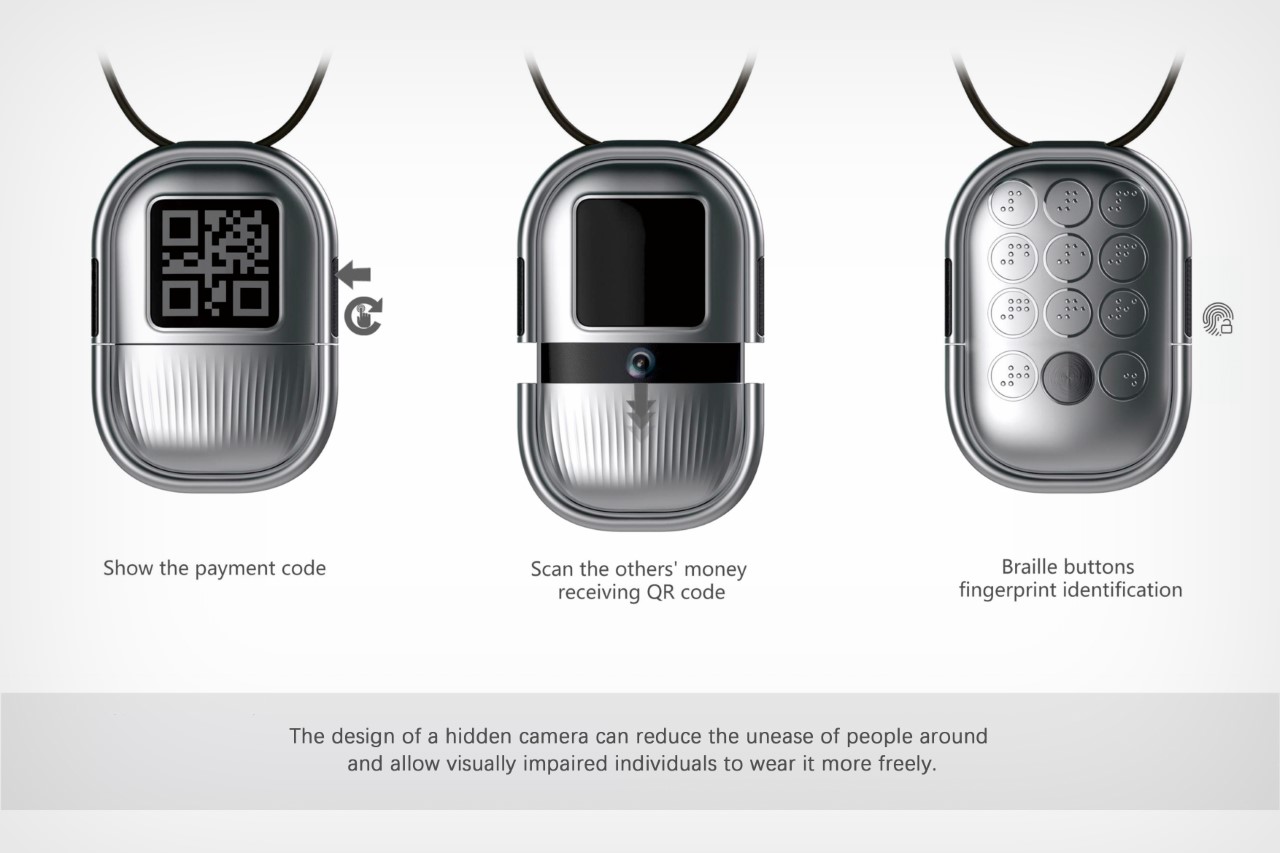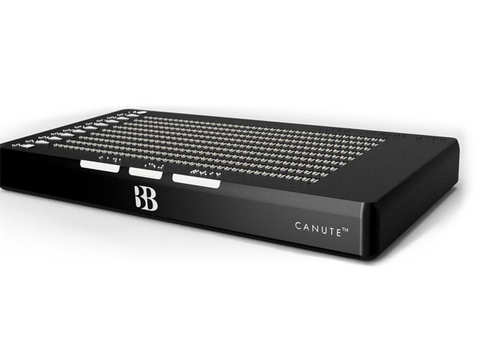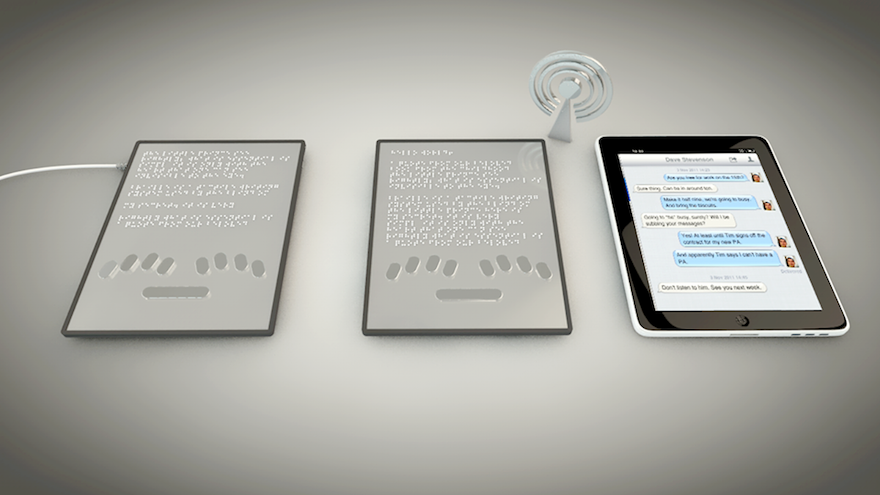Lightweight Technology for Low Vision: A Game-Changer in Accessibility
Lightweight Technology for Low Vision: A Game-Changer in Accessibility
Blog Article
Discover Cutting-edge Tools Designed for the Visually Impaired
The advancement of ingenious devices for the visually impaired stands for a considerable advancement in availability and independence. Technologies such as clever glasses with AI capacities and mobile applications created to supply acoustic summaries are reshaping everyday experiences for users. In addition, wearable gadgets that employ haptic feedback enhance ecological awareness, while modern-day Braille technologies offer new methods to engage with message. As these tools proceed to develop, their influence on the lives of those with aesthetic impairments elevates important inquiries about the future of inclusivity and autonomy in numerous aspects of life. What exists ahead in this technical landscape?
Smart Glasses for Navigating

Smart glasses made for navigation are transforming the means aesthetically impaired people communicate with their atmosphere. These advanced tools use a mix of cam modern technology, synthetic intelligence, and acoustic comments to offer real-time details regarding surroundings. By employing challenge discovery systems, wise glasses can alert individuals to potential threats, enabling much safer wheelchair in both familiar and unknown settings.
The combination of GPS technology additionally enhances navigation capacities, enabling users to get auditory directions as they relocate. This hands-free approach not just cultivates self-reliance however additionally encourages visually damaged people to navigate city landscapes with boosted confidence. In addition, many smart glasses are outfitted with attributes that recognize spots and street indications, supplying contextual info that enhances the user experience.
Additionally, the growth of these devices is continually progressing, with business functioning to enhance the precision of item recognition and broaden the range of navigational features. As wise glasses end up being much more available and affordable, they hold the prospective to substantially change life for aesthetically damaged individuals. Ultimately, these cutting-edge devices represent a critical action towards inclusivity, offering improved wheelchair and a higher sense of freedom for individuals navigating the globe around them.

Mobile Apps for Daily Living
Exactly how can mobile applications improve the day-to-days live of aesthetically impaired people? Mobile applications are revolutionizing the way aesthetically damaged individuals browse their atmospheres, handle everyday tasks, and accessibility info. These applications offer essential support through numerous capabilities, fostering self-reliance and improving lifestyle.
Several cutting-edge mobile apps are designed particularly for day-to-day living. Apps like Be My Eyes connect aesthetically damaged customers with sighted volunteers by means of video clip telephone calls, permitting them to obtain real-time aid with jobs such as checking out tags or browsing unknown areas. In A Similar Way, Seeing AI, created by Microsoft, uses synthetic knowledge to explain surroundings, checked out text, and recognize things, successfully changing a smart device right into an effective device for day-to-day assistance.
Furthermore, navigating applications customized for the aesthetically impaired, such as Aira and BlindSquare, offer audio-based instructions and environmental details, making it possible for individuals to traverse their environments safely and confidently. Past navigation and prompt support, mobile applications also sustain organization and task administration, with features that aid individuals set pointers, develop order of business, and track appointments. In summary, mobile applications function as essential sources, encouraging aesthetically impaired individuals to lead even more independent and meeting lives.
Wearable Technologies for Help
Empowerment through modern technology is progressively evident in the realm of wearable gadgets designed to help visually damaged people. These cutting-edge tools incorporate effortlessly into life, boosting navigation and supplying crucial comments to individuals. Smart glasses furnished with electronic cameras can read and acknowledge faces message out loud, enabling individuals to communicate more confidently in specialist and social settings.
Another significant innovation is using haptic comments systems in wearable tools. These systems utilize resonances or other tactile signals to share info concerning the individual's atmosphere, such as obstacles or modifications in terrain, enhancing wheelchair and security. Wearable innovations likewise include wristbands that attach to smartphones, notifying users to notifications through subtle vibrations, thus enhancing connection without dependence on aesthetic hints.
As these innovations proceed to advance, they are not just enhancing self-reliance for visually impaired people yet additionally fostering a greater feeling of addition in society. By bridging the void between challenges faced in day-to-day living and the capacity for autonomy, wearable technologies work as pivotal devices in the quest for equality and empowerment for those with visual disabilities.
Audio Summary Tools
Sound description tools play a critical duty in boosting access for visually damaged people, supplying them with the capacity to engage with aesthetic media. Speech-to-text devices for low vision. These tools offer narrated descriptions of essential visual components in films, tv shows, and live performances, making sure that customers can fully understand the context and emotions shared through visuals
Audio description can be incorporated right into try this out different systems, including hour glasses streaming services, movie theater testings, and live cinema. Lots of popular streaming services now consist of audio description as an access function, permitting viewers to choose it quickly. Along with mainstream media, specialized apps likewise exist, providing audio summaries for art exhibitions, galleries, and other social occasions.
The effectiveness of audio description rests on the ability of the storytellers, that should communicate aesthetic details succinctly without diminishing the original audio. Advancements in this area are likewise leading the method for even more personalized experiences, where customers can adjust the level of information and pacing according to their choices.
Braille Innovations and Devices
Braille advancements and devices have substantially changed the way visually damaged individuals interact with message and info. Modern advancements have actually resulted in the advancement of flexible tools that improve proficiency and independence among users. Notably, Braille show modern technologies have actually developed, enabling vibrant reading experiences. These gadgets convert electronic message into Braille, making it possible for individuals to access a large variety of information site here on tablets, mobile phones, and computers.
Additionally, mobile Braille notetakers integrate typical Braille input with modern functionalities, helping with note-taking, organizing, and paper modifying on the go. Speech-to-text devices for low vision. These portable devices often include text-to-speech capacities, connecting the gap between Braille and acoustic info
On top of that, cutting-edge Braille printers have arised, allowing individuals to produce Braille labels, files, and academic materials efficiently. This access promotes greater engagement in academic and professional environments, inevitably promoting inclusivity.
Furthermore, study into smart Braille modern technologies proceeds to increase. Tools that include man-made intelligence are being discovered to give real-time navigation aid and contextual info, enhancing the individual experience in varied setups. In general, these developments reflect a dedication to empowering visually damaged individuals with modern technology, ensuring they can conveniently accessibility and involve with the world around them.

Conclusion
The advancement of cutting-edge tools for the aesthetically damaged considerably enhances independence and lifestyle. Smart glasses, mobile applications, wearable innovations, audio summary tools, and Braille developments collectively encourage individuals by supplying important navigating help, ecological understanding, and boosted reading experiences. These modern technologies not only foster higher addition however likewise promote autonomy in daily activities, inevitably adding to an extra accessible and fair society for visually damaged individuals. Proceeded growth in this area holds guarantee for additional enhancements.
As wise glasses become more accessible and affordable, they hold the possible to considerably change everyday life for visually damaged customers. Mobile applications are revolutionizing the method visually damaged customers browse their settings, take care of everyday tasks, and access info. Apps like Be My Eyes link aesthetically impaired individuals with sighted volunteers by means of video clip phone calls, allowing them to obtain real-time support with tasks such as reading labels or navigating unfamiliar spaces.Furthermore, navigating apps tailored for the visually impaired, such as Aira and BlindSquare, supply audio-based directions and ecological information, making it possible for users to traverse their environments securely and confidently.The improvement of cutting-edge devices for the aesthetically damaged dramatically boosts independence and quality of life.
Report this page